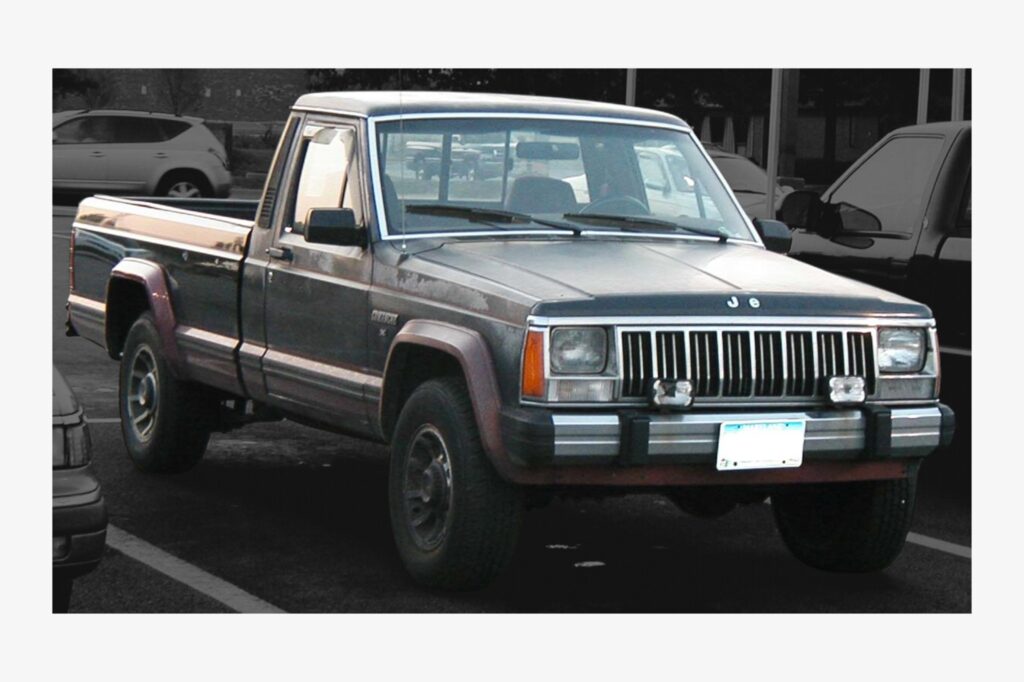The Toyota Hilux, Dodge 50, Ford Ranger, and Mazda B are pickup trucks that have dominated the market through different decades. However, there was a model that was on par with all four based on specifications and capabilities.
Enter the Jeep Comanche, a compact pickup truck introduced in the 80s. The Comanche set numerous records back in its day and is well-regarded amongst truck enthusiasts even today. It begs the question, why isn’t the Comanche as popular as its peers?
The History of the Jeep Comanche

The mid-1970s saw increased interest in pickup trucks as an alternative to sedans. It may have to do with Japanese manufacturers finding their way into the American markets by introducing compact trucks with smaller engines than American automobiles.
Imported compact trucks became such a commodity that American manufacturers designed their pickups to counteract the Japanese automobile takeover. AMC-owned Jeep saw this opportunity to introduce the Jeep Comanche (named after the Comanche Tribe of northwest Texas) in 1986.
A successor to the Jeep Scrambler, the Comanche truck was based on the platform of the Jeep Cherokee, one of the manufacturer’s best-selling SUVs. This was done to reduce manufacturing costs by AMC, which also controlled the Jeep and Dodge truck brands.
The models had the same drivetrain, unibody construction, and front-end styling. The only glaring difference between the two is the truck bed.
The Jeep Comanche competed against more prominent trucks like the Toyota Hilux, Dodge Ram 50, Ford Ranger, and Mazda B Series and had trouble keeping up with these models.
Eventually, Jeep abandoned the Comanche in 1992 due to Chrysler’s corporate acquisition of AMC. This resulted in the division of its market offers, with Dodge being the primary body-on-frame truck line and Jeep focusing on SUVs.
Besides the acquisition, both the Cherokee and XJ Wagoneers outperformed the Comanche, resulting in low profits and the eventual downfall of the Comanche.
Jeep Comanche Specifications
The 1986 Jeep Comanche produced a 2.8-liter V-6 with 115 horsepower and a torque of 150 pound-feet. Meanwhile, the 1986-1987 model had a 2.1-liter turbodiesel with 132 pound-feet of torque and 85 horsepower. The V7 engine was similar to Chevrolet’s S-10 truck, but it had a two-barrel carburetor instead of a fuel injection system.
Fast forward to 1987, Jeep added the 4.0-liter inline-six engine and a manual transmission that could haul up to 2,000 pounds. The 1987 model produced 173 horsepower and 220 pound-feet of torque. AMC immediately advertised the Comanche as the best-performing towing truck if fitted with the right equipment.
Aside from its towing capabilities, the Comanche was known for its fuel efficiency even if it had a two-barrel carburetor instead of a fuel injection system. For reference, the 1986 model was capable of 21 mpg city and 25 mpg highway.
However, fuel efficiency dropped to 18 mpg city and 22 mpg highway near the end of the Comanche’s production, on par with competitors like the Ford Ranger and Chevrolet S-10.
Lastly, the Comanche was known for its durability and maintenance/repair ease. According to some, several models over 250,000 miles didn’t show signs of significant issues. And even if they do, part replacement was inexpensive because the Comanche can use Cherokee’s sourced components. It also helped that there were millions of Cherokees in the 1980s.
Jeep Comanche Reception
While the model was short-lived, the Comanche set international records during its time. It broke nine records, four of them being outside of the United States. The efforts started in 1985 when people from Jeep’s engineering team had the idea to set a land speed record to highlight the Comanche’s 4.0-liter incline-size engine.
They fitted the Comanche with the six-cylinder engine (LSR1). However, the engine blew up before reaching the record, so the engineering team fitted a more powerful mill called the LSR-2.
The following year, in the 1986 Bonneville time trials, the Comanche hit a high speed of 144 mph. According to Chrysler, the model set seven speed marks for trucks and established six national and international car records during that time.
The Comanche was also advertised for contests on paved roads and off-road, where it was by far the best-performing vehicle.
On paper, the Jeep Comanche was an excellent vehicle, but the market just wasn’t there. American Motors and the Chrysler Corporation only produced 190,000 Comanches.
From 1985 to 1989, there were only 25,000 units per year, while 1990 and 1991 only saw 9,500 and 5,100 units, respectively. By 1992, there were only 950 Comanches built before discontinuation. The best year for sales was 1988 when 43,718 units were sold.
Any information provided on this Website is for informational purposes only and is not intended to replace consultation with a professional mechanic. The accuracy and timeliness of the information may change from the time of publication.

























